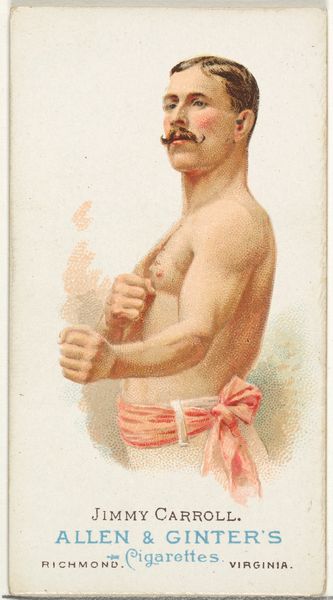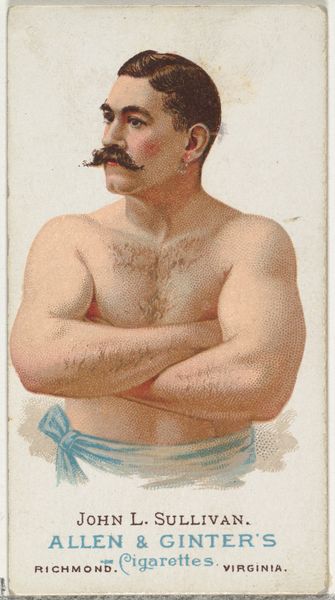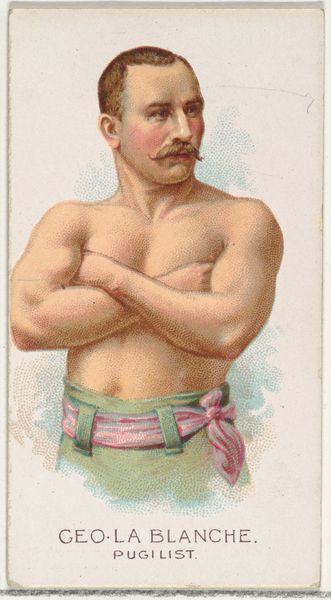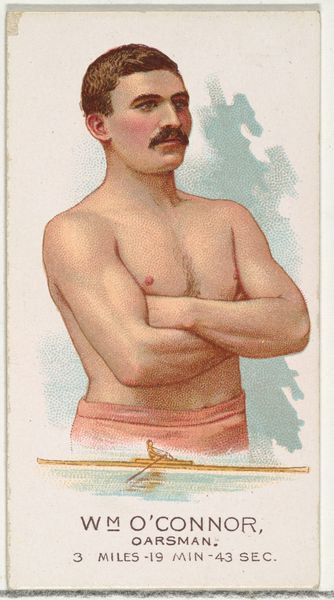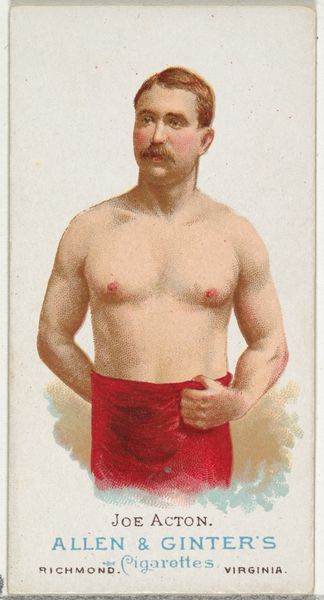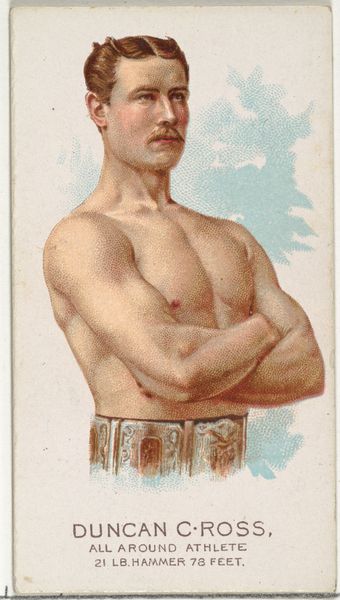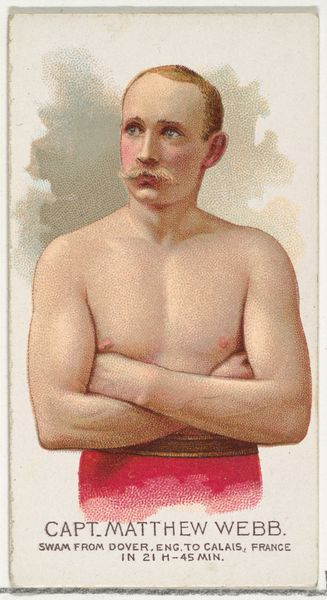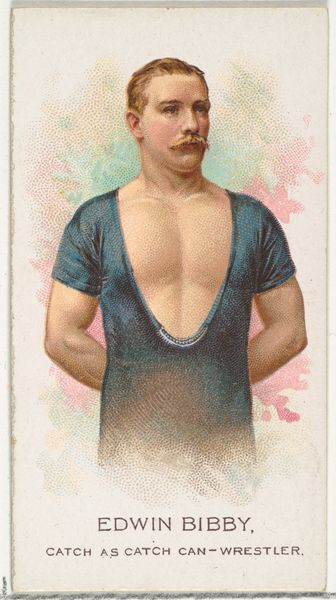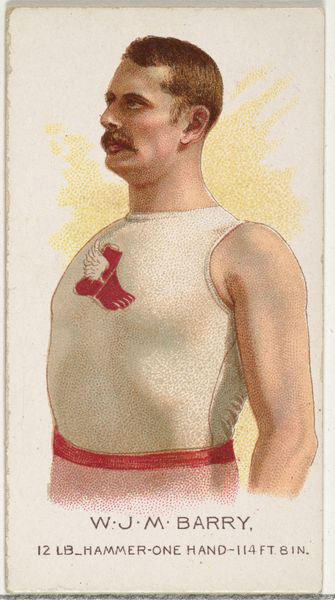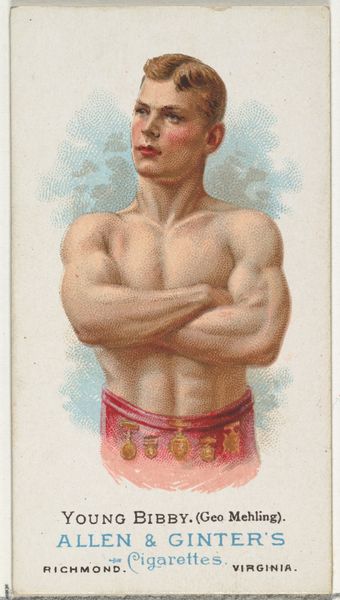
Theobaud Bauer, Greco-Roman Wrestler, from World's Champions, Series 2 (N29) for Allen & Ginter Cigarettes 1888
0:00
0:00
#
portrait
# print
#
caricature
Dimensions: Sheet: 2 3/4 x 1 1/2 in. (7 x 3.8 cm)
Copyright: Public Domain
Curator: This lithograph print, dating back to 1888, is entitled "Theobaud Bauer, Greco-Roman Wrestler, from World's Champions, Series 2 (N29) for Allen & Ginter Cigarettes." The Allen & Ginter company clearly understood marketing. Editor: It's striking how such a simple image can command attention. There's something inherently powerful in the subject’s pose – arms crossed, a steady gaze… It suggests both confidence and contained energy. I see this interesting Japonisme stylistic influence in the airbrushed vignette as well, softening an otherwise imposing figure. Curator: It’s also fascinating how these trade cards became so popular. These little lithographs, originally tucked into cigarette packs, turned into collectable pieces. They depicted everything from athletes to actors to, well, exotic birds and florals. It really speaks to the democratization of imagery in the late 19th century. Editor: I'm immediately drawn to the flatness of the composition – a clear break from the illusionism of academic painting. And the use of the lithographic crayon, or perhaps tusche washes, lends the piece a sketch-like quality, hinting at Impressionist tendencies despite its commercial function. What semiotic meaning do you make from the man's prominent mustache? Curator: You're right to pick up on that tension, the blend of commerce and something akin to fine art. And that mustache – the Victorian era certainly favored powerful facial hair. For consumers at the time, it perhaps signaled virility, sophistication, a mark of the modern man presented alongside a token of tobacco, though some scholars like to read it as the figure's mask. These cards are so telling of social values during that period. Allen & Ginter captured something intangible in these athletes that truly resonated. Editor: Ultimately, the image resonates due to the figure's posture, offering us a unique glimpse of masculinity from the era. Looking again at this portrait, the choice of presenting the subject nearly nude with the vignette gives him the idealized timelessness of classical antiquity while advertising a vice of modernity. Curator: Absolutely, and thanks to places like The Met, we can view them anew, seeing echoes of societal trends within the lines of even a simple trade card. Editor: Precisely. These works offer more than what immediately meets the eye; with thoughtful study, there’s profound information about that era to glean.
Comments
No comments
Be the first to comment and join the conversation on the ultimate creative platform.
